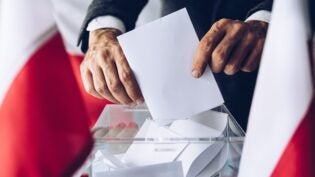Is Your Office an Injury Waiting to Happen?
By: SmallBizClub

As well as the distress caused to your valued employees, office injuries can also lead to workers compensation claims, and the inconvenience of needing to arrange cover for a worker who is out of action.
Making an office safe is a fairly straightforward task. An eye for detail and potential hazards and some changes in equipment or the way daily tasks are carried out will minimize risks and improve your office’s safety. Slips, falls and trips, and sprains and strains, are two of the most common hazards for office workers, so what can you do to help prevent those kinds of injury, starting today?
Slips, Falls, and Trips
Falls and trips are one of the most common causes of injury in an office, with the National Safety Council estimating that workers are more likely to suffer a disabling fall in an office than anywhere else. Boxes, files, wires and even furniture such as chairs and desks can create a hazard.
Encourage your employees to keep walkways and any other places that their colleagues need access to clear at all times. Cords and wires should be covered and kept secure and shouldn’t trail across walkways or corridors.
Standing on a chair or desk to reach something is also a common fall hazard in the office. Make your office safer by providing small stools or stepladders for employees to use if need be, and trying to minimize the number of items stored higher than can safely be reached from the ground.
Slipping on wet surfaces can also cause injury. Non-slip rugs or mats can make a big difference, especially in areas where employees enter the building from outside. Keeping floors clean and dry and using hazard signs if a floor is slippery also helps. Don’t forget to be extra vigilant in wet or wintry weather, and clean up any spills as soon as they happen.
Sprains and Strains
Sprains and strains are another common type of injury cited in claims from office workers. Many office workers spend their days sitting at a desk and working at a computer—there’s a good chance that as an office-based business owner you do this yourself. It’s all too easy for employees to sustain an injury as a result of bad ergonomics, but there are steps you can take to help prevent strains. Adjustable office furniture products such as computer chairs can make a big difference to your employees. Being able to adjust their chair means your employees can find the most comfortable, and safe, working position. Add to that ergonomic keyboards, mouse mats and even desks and you can go a long way to preventing strain and sprain injuries.
You can also help make your office safer by offering instructions on good working ergonomics. Encourage your employees to work safely and smartly by taking regular breaks to stretch or walk around, and by varying tasks if possible.
Injuries at your small business are inconvenient and painful, but with some forward planning they can be prevented. Investing in more ergonomic equipment and involving everyone in practicing good office safety will help keep your office and your team safe.
Author: Tristan Anwyn writes on a wide variety of topics, including social media, SEO, office safety and ergonomic furniture.
2267 Views












